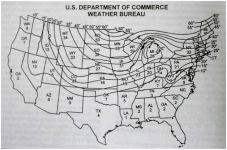Pumps do not change the density characteristics of water.
And even in a pool there is typically thermal stratification.
Pools turnover the water just like lakes.
Let's back up just a bit to talk about what happens before the lake freezes. During the summer, most lakes are
thermally stratified. Warm lower density water sits on top of colder higher density water. As
summer transitions to fall, the upper layers cool, breaking down that density difference. Eventually, the surface of the lake cools to 4 degrees Celsius (39.2 degrees Fahrenheit), the temperature at which water is most dense. This causes the water at the surface to settle to the bottom, pushing the now relatively warmer water at the bottom back to the surface. This process continues until the surface water cools below 4-degrees Celsius, at which point it becomes less dense, and eventually freezes. Remember, water is most dense at 4 degrees Celsius. It becomes less dense above and below this temperature. If water were most dense as a solid, lakes would freeze from the bottom up, eventually freezing solid. In that case, little or nothing would survive in the lake. Most lakes and ponds don't completely freeze because the ice (and eventually snow) on the surface acts to insulate the water below. Our winters aren't long or cold enough to completely freeze most local water bodies. This process of lakes turning over is
crtically important to the life in the lake. It is these
turnover periods that infuse and distribute oxygen throughout the entire water column.



